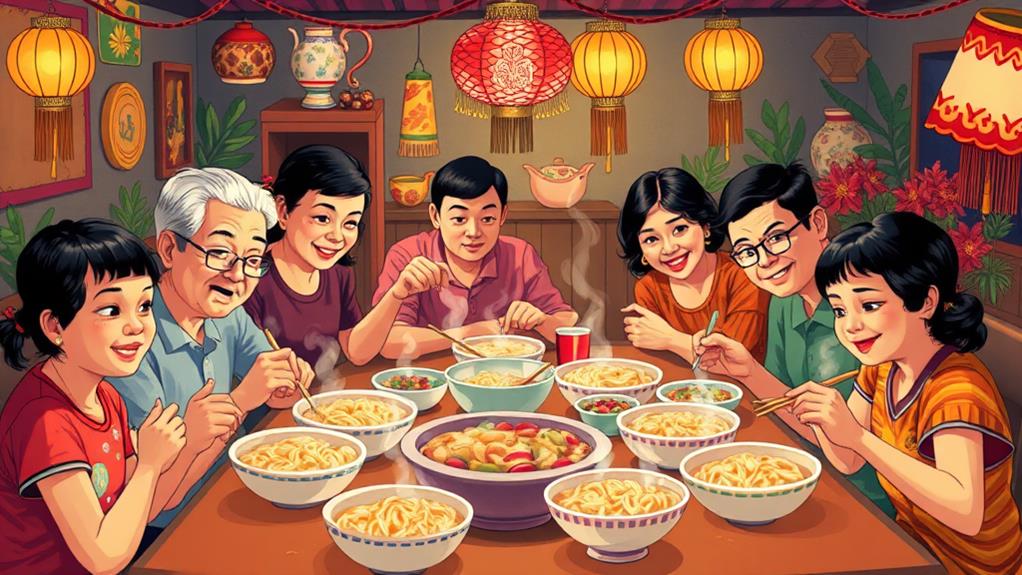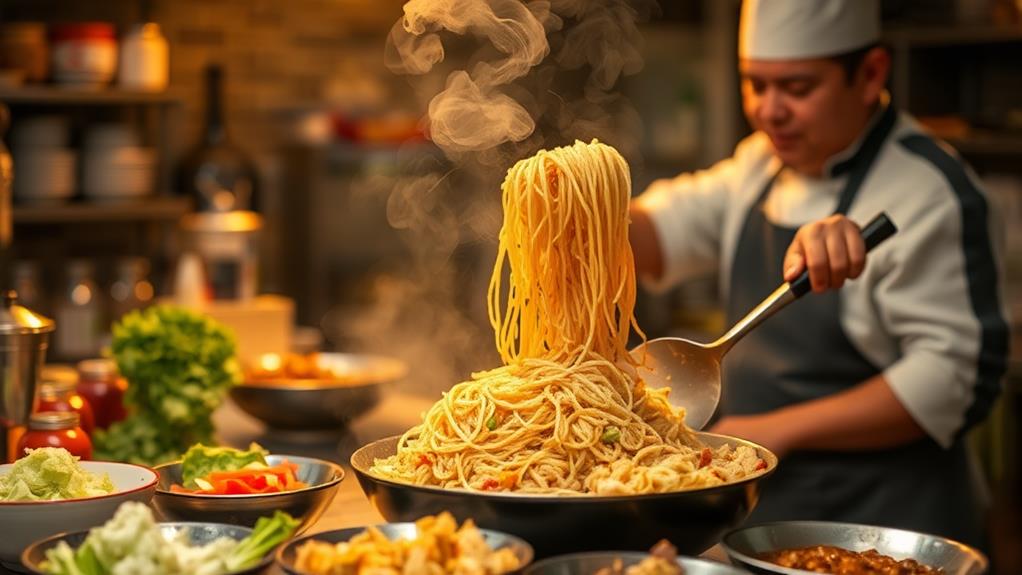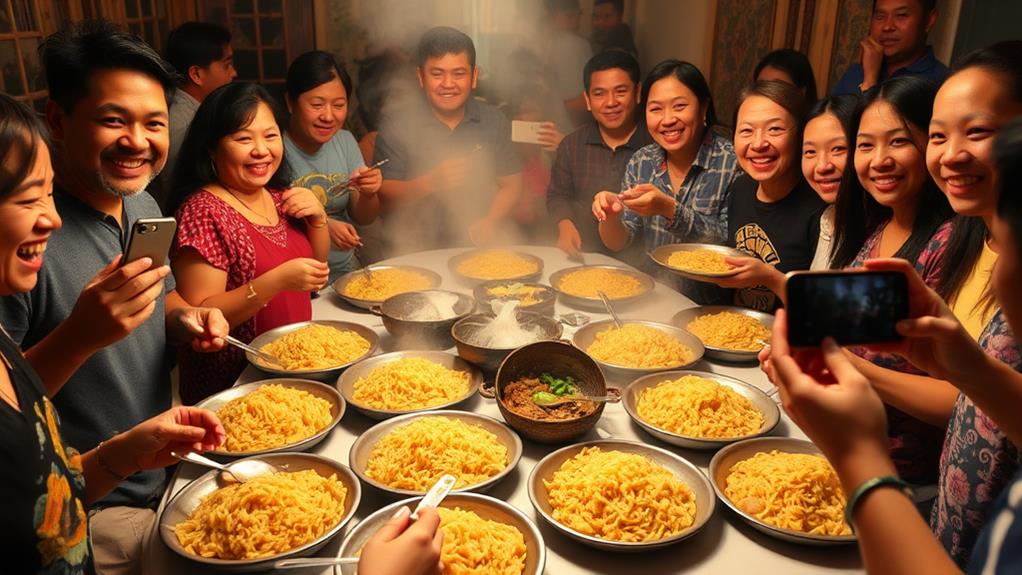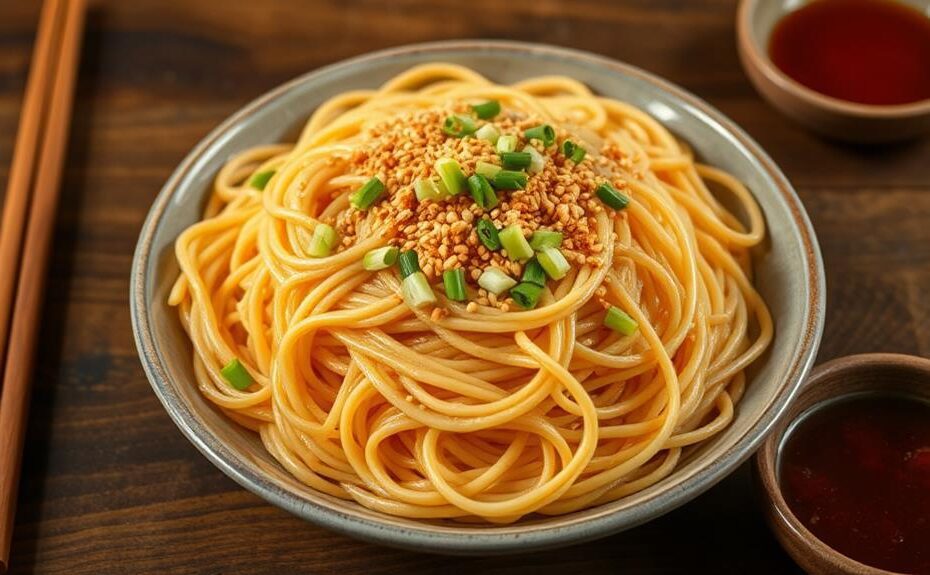Mastering Pancit: A Filipino Noodle Dish
Understanding the Foundations of Pancit
To create an authentic Filipino noodle dish, select the right type of noodles, such as rice flour noodles or egg noodles.
Cut vegetables and proteins into uniform bits to ensure even cooking and texture.
Build flavor with aromatics like onions, garlic, and ginger to create a savory base.
Achieving a Balanced Flavor Profile
Stir-fry ingredients in the correct order to prevent overcooking and promote even browning.
Use a combination of soy sauce, fish sauce, and oyster sauce to create a balanced flavor profile.
Add vegetables and proteins at the right time to preserve their texture and flavor.
Variations and Tips
Experiment with different protein sources, such as pork, chicken, or shrimp, to create unique flavor profiles.
Add vegetables like cabbage, carrots, and bean sprouts to increase texture and nutrition.
Share your creations and learn from others to discover new variations and tips.
Exploring Pancit's Cultural Significance

Pancit is a cultural symbol of significance in Filipino culture, representing traditions, community, and family.
Traditionally, Pancit is served during significant life events like birthdays and weddings, symbolizing long life and prosperity. This cultural significance is rooted in the dish's history, which reflects the cultural adaptation from Chinese influences, evident in its name, meaning "cooked in a pan."
Pancit is a communal dish that fosters sharing and togetherness. In the Philippines, it's often served with lumpia (spring rolls) at gatherings, bringing people together.
The variations of Pancit across different regions showcase the diversity of local ingredients and culinary traditions, highlighting the richness of Filipino culinary heritage.
As a comfort food, Pancit bridges generations, preserving traditional Filipino values and cultural practices. By exploring Pancit's cultural significance, you'll gain a deeper appreciation for the role it plays in Filipino culture, and the importance of family, community, and tradition.
Mastering the Perfect Recipe
Selecting the Right Noodles
To master the perfect Pancit recipe, choose vermicelli or pancit canton noodles and soak them according to package instructions for optimal texture.
Preparing Ingredients
Cut all vegetables and proteins uniformly to ensure even cooking and enhance the overall presentation of the dish.
Building Flavor
Use a combination of aromatics like garlic and onions, sautéed in oil until fragrant, to build a flavorful base for your Pancit.
Then, incorporate a variety of vegetables like cabbage, carrots, and green beans, along with your choice of meat.
Seasoning and Cooking
Adjust seasoning with soy sauce and salt to achieve a balanced flavor profile.
As you stir fry the ingredients, allow the noodles to absorb the broth while cooking, stirring occasionally, which will enhance the flavor and provide a deliciously cohesive dish.
Cooking Techniques and Tips

Masterful cooking techniques can elevate your Pancit recipe from good to great.
Soaking noodles is crucial: Start by soaking your rice vermicelli noodles in warm water for 5-10 minutes until they're soft and pliable. This ensures they absorb all the flavors without becoming mushy.
Proper sautéing is key: When sautéing, heat oil in a skillet or wok before adding aromatics like garlic and onions to bring out their fragrance and flavor.
Uniform sizes matter: Cut your vegetables and meats into uniform sizes to promote even cooking and a visually appealing presentation.
Balancing flavors is essential: Incorporate low-sodium soy sauce and a bouillon cube to add depth of flavor, balancing the dish without overwhelming saltiness.
Add vegetables at the right time: Add your vegetables towards the end of the cooking process to maintain their crunch and vibrant color.
Serving Suggestions and Variations
Serving Suggestions and Variations
When you're ready to serve your Pancit, you can enjoy it as a main dish or side, paired with lumpia for a traditional Filipino meal experience.
Pairing Options
Serve Pancit with a side of dumpling soup or shrimp fried rice for a well-rounded feast. This pairing adds variety and flavor to your meal.
Customization Ideas
Add sautéed broccoli or other stir-fried vegetables to enhance the nutrient profile and presentation. This adds fiber, vitamins, and color to your dish.
Substitute traditional noodles with gluten-free options like rice noodles or spaghetti squash for a low-carb alternative. This caters to dietary restrictions and preferences.
Serve your Pancit with a flavorful vegetable broth, seasoned with salt and pepper to bring out the flavors. This adds moisture and depth to your dish.
Experiment with different versions of Pancit, making it a quick and easy dish to enjoy with your family members. This allows you to try new flavors and ingredients, keeping the dish fresh and exciting.
Can I Use the Same Techniques for Perfecting Filipino Style Spaghetti as I Would for Pancit?
When it comes to perfecting Filipino Style Spaghetti, using the same techniques as you would for Pancit can be quite helpful. Both dishes require attention to the balance of flavors and the use of traditional ingredients. To truly master both recipes, make sure to uncover the perfecting filipino spaghetti recipe secrets.
Community Engagement and Feedback

Community Engagement and Feedback
When sharing Pancit creations online, you can expect a wave of responses from fellow food enthusiasts. This community engagement is a significant aspect of the Filipino Pancit experience, where people come together to share their love for this beloved dish.
Comments and Feedback: When you share your recipe for Pancit, you'll often receive comments like "thank you for sharing" or "this tastes good". These comments are a testament to the supportive online cooking community.
Sharing Variations and Results: Many users have learned how to cook Pancit from their Filipino family members and are eager to share their own variations and results.
Recipe creators can invite users to share their own Pancit creations on social media platforms, enhancing the communal cooking experience.
Exchange of Ideas and Experiences: The online Pancit community is special because of the Exchange of Ideas and Experiences. You'll see discussions about the best way to cook meat and vegetables, or the perfect balance of flavors.
Take the time to engage with the community, and you'll find that it's a great way to connect with others who share your passion for Filipino Pancit.
Frequently Asked Questions
What Kind of Noodles Are Used in Pancit?
Rice vermicelli noodles are traditionally used in Pancit. This type of noodle is a staple in the dish and provides a classic experience.
However, other options like pancit canton, udon, or chow mein can be used for a unique twist. These alternatives offer a different texture and flavor profile, allowing for regional variations and personal preferences.
MIKI Philippine Noodles are a popular choice for an authentic and chewy consistency.
Glass noodles, on the other hand, add an interesting texture to the dish. The variety of noodles used in Pancit reflects the regional diversity of the Philippines, making the dish rich in local flavors and traditions.
What Goes Well With Pancit?
Pancit is best served with sides that complement its flavor profile.
Pairing pancit with lumpia, a Filipino spring roll, is a classic combination. This pairing works well because both dishes share similar flavor profiles and textures.
Adding sautéed vegetables provides a nutritional boost and adds a pop of color to the dish. Some recommended vegetables include bell peppers, carrots, and green beans.
For a refreshing twist, pickled vegetables or dumpling soup can be served as a side. These options provide a tangy contrast to the savory flavors of the pancit.
What Is the Filipino Tradition of Pancit?
Pancit is a traditional Filipino noodle dish that symbolizes long life. It's often served at celebrations like birthdays and weddings, where its significance is deeply rooted in Filipino culture.
Pancit has a rich history influenced by Chinese cuisine. The dish has evolved over time, incorporating local flavors and cooking techniques to become a uniquely Filipino culinary staple.
As a result, regional variations of pancit have emerged, each with its own distinct flavor profile.
Pancit brings people together. It's commonly served at family gatherings and communal events, where its flavorful profile and vibrant presentation are enjoyed by everyone.
The dish is an integral part of Filipino social gatherings, fostering a sense of community and togetherness.
What Is Pancit Supposed to Taste Like?
Authentic Pancit has a harmonious balance of flavors.
This balance is achieved by combining savory notes from soy sauce and garlic with the natural sweetness of fresh vegetables. The umami depth from meats like pork or shrimp adds richness to the dish.
The broth's richness coats your taste buds, and the spice balance is just right.
The texture of Pancit is a delight.
The soft noodles contrast with the crunch of fresh vegetables, creating a pleasing sensation in your mouth.
The freshness of ingredients and regional differences in cooking techniques make each Pancit dish unique.
